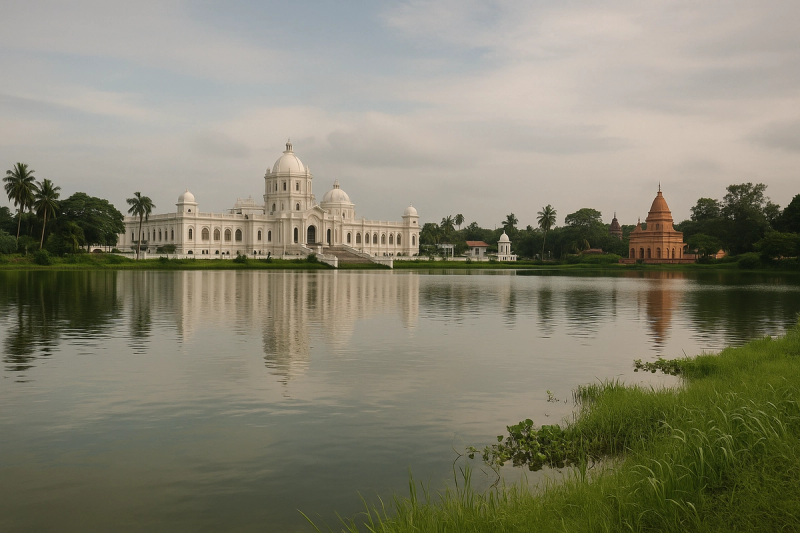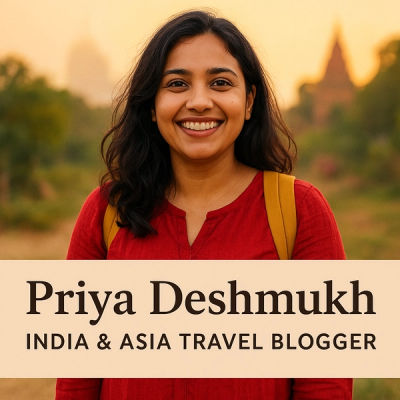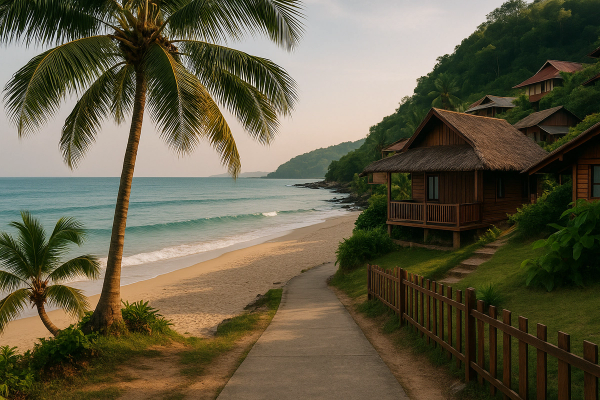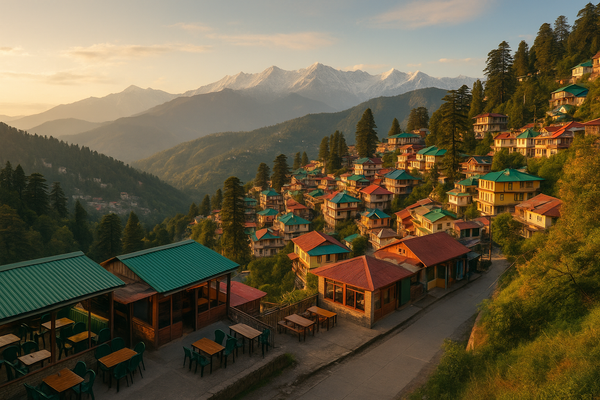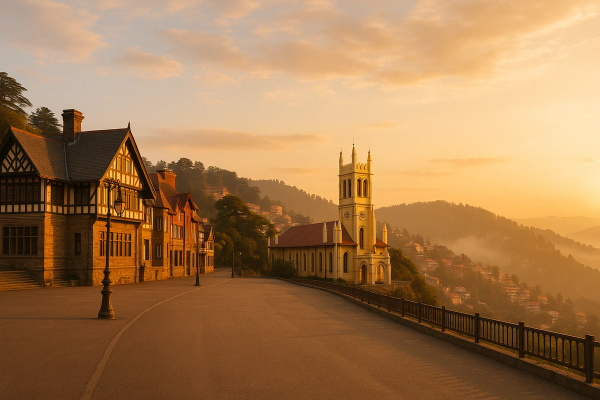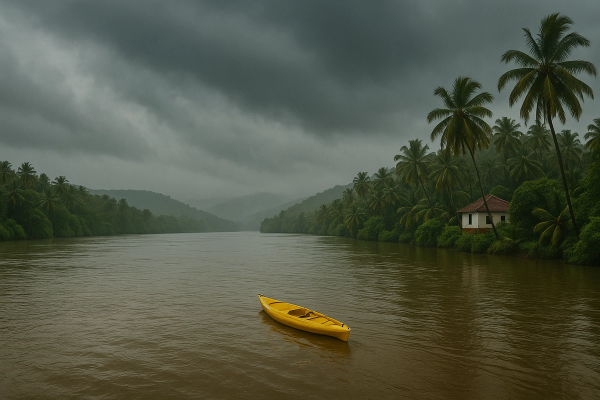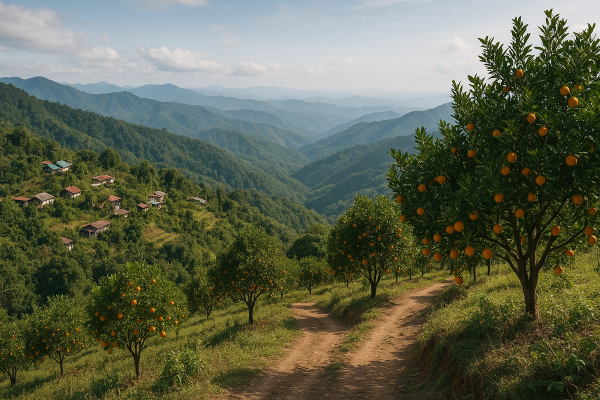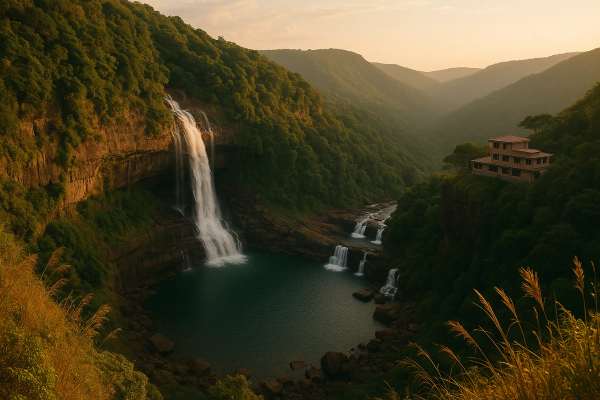Agartala Itinerary: Ujjayanta Palace, Neermahal, Temples & Eats — a slightly messy, very real guide#
I’ll be honest, Agartala wasn’t one of those places I had on a vision board or whatever. It kinda happened because a friend from college is from Tripura and he kept saying, “boss, come once, you don’t know what you’re missing.” So I went. A few days, a small backpack, no big expectations. And wow. The city’s not flashy or in-your-face, but it’s got that calm confidence. A mix of royal nostalgia, lakes, slow traffic, temple bells, and the smell of fresh-cut bamboo in the markets. People talk softly, like they’ve got time, and you start matching their pace before you even realise. This is my chill but very useful Agartala itinerary — Ujjayanta Palace, Neermahal, temples, and the food that kept sneaking up on me. With real tips, little goof-ups, and that one moment on Rudrasagar Lake I still keep replaying in my head.¶
Getting in: flights, trains, borders, and those tiny last-mile details#
Agartala is properly connected now. Flights into Maharaja Bir Bikram Airport are decent — mostly from Kolkata, Guwahati, Delhi, Bangalore on busy days. Indigo, Akasa have regular routes, and yes the new-ish terminal is clean and airy. If you’re the train person, broad gauge links have made it way easier to ride in from Guwahati or even Delhi via the Tripura Sundari and Rajdhani routes. It takes time though, so pack patience and snacks. As of early 2025, cross-border rail with Bangladesh at Akhaura is functional infrastructurally and the buzz is big, but for tourists it’s still mostly road via the Agartala–Akhaura checkpost or the Agartala–Dhaka bus on specific schedules. Inside the city, autos and e-rickshaws are your besties. App cabs are limited, so don’t bet the trip on Uber vibes. Keep some cash for short rides. UPI works in most spots, even at the boat ghat to Neermahal, but network can go moody when it drizzles.¶
When to go and what to expect (weather, festivals, safety)#
Tripura doesn’t scream for attention with seasons, but it whispers pretty loudly. November to February is the sweet spot — crisp mornings, sweater evenings, skies that actually behave. March to May can be warm and a bit sticky. Monsoon, June to September, is lush and dramatic. Yea, rains can derail road timings and boating hours at Rudrasagar, so check before you bounce out to Neermahal. Festivals matter here. Kharchi Puja around July in Old Agartala is pure energy. Neermahal Jal Utsav usually happens in late monsoon with boat races and cultural programs. Durga Puja turns the whole city into one giant adda, lights everywhere. Safety-wise, it’s chill. I walked back from the palace area after dinner and it felt fine. Just regular urban common sense, that’s it. Solo women travelers I met at my stay were comfortable. Oh, and carry a scarf for temples and sunscreen for that cranky 2 pm sun.¶
A simple 2-day Agartala itinerary that actually works#
If you’ve got a weekend or long-ish two days, this is the flow that felt natural, not rushed. Day 1 keep it city: Ujjayanta Palace museum in the morning, a temple or two nearby, lazy lunch, then Heritage Park or just a cafe and an evening walk around the markets. Day 2, go out: Neermahal + Tripura Sundari Temple. If you’re the wildlife person, swap in Sepahijala Sanctuary for either the morning or afternoon. Don’t overstuff the days, you’ll miss the slow charm that’s honestly the whole point. Wake early, nap after lunch if you want, and keep room for random tea breaks. I swear the unplanned stops make Tripura stick in your heart.¶
- Day 1 morning: Ujjayanta Palace Museum, then stroll the palace grounds and the lakes around it
- Day 1 evening: Jagannath Bari or Laxmi Narayan Temple, market hopping around Palace Compound and Post Office Chowmuhani
- Day 2 morning: Neermahal at Rudrasagar Lake (Melaghar), boat out to the palace
- Day 2 afternoon: Tripura Sundari (Matabari) Temple at Udaipur, chai by the lake, drive back before it gets too dark
Ujjayanta Palace: the royal heart, but it’s the museum that got me#
So I enter thinking it’ll be one of those pretty facades and standard halls. But the Tripura State Museum inside Ujjayanta is packed. Ethnography, royal textiles, old photos of the Manikya dynasty, and detailed displays about Tripuri, Reang, Chakma, Halam communities. It’s not dusty, it’s alive. The white domes look like they’re floating if you catch them after a drizzle. There’s a lake on one side, benches where families share muri and peanuts, kids chasing pigeons. Timings are usually around 10 am to 5 pm, closed on Mondays. Tickets cost very little for Indians, think pocket change levels, camera separate. Give yourself 1.5–2 hours here. Tip from a lazy bum who messed up: reach early. School groups come by 11 and it gets noisy. Dress light. Keep a bottle of water. And take a moment on the steps outside, just sit and breathe. It smells like old mango trees and rain.¶
Neermahal: the water palace that sneaks up on you#
Rudrasagar Lake is about 50–55 km from Agartala, Melaghar side. The last bit is a casual road lined with shops selling chai, biscuits, and those neon-colored toffees we all pretended to hate in school. Boats leave from the ghat every 15–20 minutes when it’s busy. You get two options — shared boats, slow and chatty, or speedboats if you’re in a hurry or just feeling filmi. Prices swing based on season and group size, roughly 100–200 per person for shared, and 500–800 for a small speedboat ride. The palace itself is photogenic from the water. Inside, some sections are open, some under ongoing conservation. Go late afternoon for the sky drama. Sunsets paint the water like actual molten gold, sounds fake, but I stood there with goosebumps. Light-and-sound shows happen on occassions and festivals, not daily, so don’t bank on it. Avoid monsoon storm days, boats pause operations. Dress modest if you’re planning temple visits after, nobody likes changing in a public toilet, trust me.¶
Temple trail: Tripura Sundari, the Chaturdasha Devata shrine, and Jagannath Bari#
Tripura Sundari Temple at Udaipur is one of the 51 Shakti Peethas, which, if you grew up in India, you’ve heard a thousand times but it still hits different when you’re there. The idol is small but powerful, the ambience old-school, bells and chants blending with pigeons flapping overhead. Mornings are best, or just before sunset. Dress simple and carry a small scarf. The floor heats up in the sun, so socks are a life saver. Prasad was khichuri and labra the day I went, served with that temple calm that makes everyone suddenly extremely patient. Back in the Agartala city area, Jagannath Bari is serene, and the Chaturdasha Devata Temple in Old Agartala has that cultural gravitas, especially around Kharchi Puja. If you’re temple-hopping, start early, keep a water bottle, don’t click photos inside if signs say no. Also, keep change for the shoe counters. Sounds minor, saves you awkward fumbling with a 500 note.¶
Food in Agartala: Tripuri flavours, Bengali comfort, and cafe breaks that stretch into evenings#
I didn’t expect to find so much hyper-local stuff alongside our standard rolls and momos. Tripuri dishes are earthy and exactly what a hungry person needs. Try mosdeng (fiery chutney, sometimes with dried fish), chakhwi with bamboo shoots, and the pork cooked with local herbs. Some places do Tripuri thalis on request for lunch, ask around near Palace Compound or Battala Market. If you’re not into fermented fish, no stress, you can ask for versions without berma. City Centre area has a few cafes where I camped with endless chai and one suspiciously good cheesecake. Street food is fun in the evenings — egg devil, shingara, chow, chops, jhalmuri, the usual suspects, but somehow tastier in the light rain. Sweets lean Bengali — chamcham, rasmalai, payesh. Prices are easy on the wallet. Two people can eat full for 250–400 if you’re doing local. Tripuri pork meals will be a bit more, but totally worth it. Don’t leave without trying bamboo shoot anything. Life regret if you do.¶
Where to stay and how much it’ll set you back#
Stays in Agartala are pretty straightforward. Budget guesthouses and simple hotels around the Railway Station road and Palace area hover around 800–1500 a night. Clean rooms, bucket-hot-water vibes, and friendly uncles who will tell you ten stories before giving you your room key. Mid-range business hotels with AC, breakfast buffets, and decent WiFi go 2500–4500. Tripura Tourism runs a few reliable properties and they’re usually value-for-money, close to the main bits. If you like predictability, Ginger Agartala is a safe pick. For location, being near Palace Compound gives you walkable evenings and quick autos everywhere. If you’re the kind who needs a view, some stays on the city edges have fields right behind, and sunsets feel like a free add-on. Book a day or two in advance in peak festival times. Prices inflate but not crazy like metros. Cash deposit is common, don’t panic, just get a receipt.¶
Local transport, money stuff, and small-city jugaad that works#
Auto-rickshaws and e-rickshaws are the backbone. Tell the driver a landmark, not an address — “Ujjayanta Palace side” or “Post Office Chowmuhani” gets you there faster than pin codes. Fares are reasonable but ask the rate before hopping in. City buses run, but I didn’t use them much, timings felt like vibes-based. App cabs exist in a very on-off way. Your hotel can arrange cars for day trips. For Neermahal and Tripura Sundari, a cab for the day is easiest, 2500–3500 depending on how many stops, do a quick bargain. UPI is accepted nearly everywhere, but in Melaghar bazaar I had to pay cash for boat snacks. Keep 100s and 50s. Jio and Airtel 4G are fine, 5G pockets are popping up in the city but drop when you move out. Download offline maps. And carry a spare power bank because phone networks in monsoon drink battery like it’s lassi.¶
Heritage Park, Sepahijala, and a few small joys if you’ve got time#
Heritage Park is honestly a sweet evening walk. Miniature models of Tripura’s key sites, clean paths, families out with kids, very shaant. If wildlife and birding is your jam, Sepahijala Wildlife Sanctuary is about 25 km from the city. It’s a mixed bag — some parts feel like a zoo, some proper sanctuary with water bodies and birds, and a few chances to spot the clouded leopard in the managed enclosures. Go early morning. Udaipur town itself has lakes and ghats beyond the main temple — wander a bit and sit by a quiet corner. If you’ve got a full extra day, Dumboor Lake and the Amarpur side are gorgeous, but that’s a proper day trip, not a detour. In late monsoon, the whole landscape turns this lush green that makes you wanna quit your job and start a tea stall. Which, honestly, not the worst idea.¶
Costs and rough budgeting (so you don’t overspend on silly things)#
If you plan well, Agartala is very wallet friendly. Daily budget can be 1500–2500 for a comfortable trip including stay, food, local travel, museum tickets. Ujjayanta Palace museum entry is basically a few coins, camera extra but still small change. Neermahal boats are the main variable — shared boats keep it cheap, speedboats add a bit of drama and cost. Food is inexpensive unless you go full cafe-hopping and dessert every few hours, which, okay, I did. For a private day cab to Melaghar and Udaipur and back, expect 3k-ish depending on your negotiation skills and fuel prices. Shopping-wise, bamboo crafts in local markets are good buys. Ask for Tripuri handloom stoles and shawls. Don’t lowball artisans, pay the fair rate. ATMs are easy in the city, slightly sparser out towards Melaghar, so withdraw before you leave.¶
A few practical tips that saved my trip from small disasters#
Carry a light scarf and socks for temples. A tiny umbrella, because Tripura clouds are comedians. Start Neermahal by 2 pm so you’re back before it’s too dark. If you’re doing both Neermahal and Tripura Sundari the same day, eat a proper lunch before the boat. I made the mistake of going on an empty stomach and nearly bought three packets of chips just out of boredom. Ask boat guys about last return timings. Wear shoes that don’t mind mud. Also, be polite. People are quietly helpful. One aunty at a tea stall literally refused to take money for my second cup of tea because “aate raho” energy. Language isn’t a problem — Bengali and Hindi get you by, English works in hotels. Don’t drone at the palace or lake, it’s not allowed in many places and locals frown upon it, rightly so. Keep your ID handy for hotel check-ins.¶
What surprised me, in the best possible way#
The calm. I know that sounds like an Insta caption, but it’s true. Agartala doesn’t try to be Goa or Shillong, it just is itself. Ujjayanta felt less like a tourist spot and more like a memory someone left open. Neermahal is different from every other palace because water changes everything — it slows you down, makes conversations softer. Food was a total win. Tripuri meals are honest cooking. No unnecessary garnish, no trying too hard, just flavours that make you feel like you’re at a friend’s house. And people. Auto bhaiya who told me where to sit for the best lake breeze. Temple volunteer who whispered “aaj labra bohot accha bana hai.” The guard at the museum who pointed out a sculpture I would’ve totally missed. Little things that don’t show up on glossy brochures,, you know.¶
If you’re traveling with family, kids, or elders#
This is actually a great family trip. Distances are small, traffic is patient, people are kind. For elders, carry a folding stool if long walks are tough — Ujjayanta has benches but the museum can take time. At Neermahal, pick a stable shared boat over the speedboat if balance is an issue. Life jackets are offered, take them. For kids, Heritage Park is surprisingly fun, plus they learn stuff without realising. Food choices are easy — simple veg meals, fish curry, egg rolls when they get cranky. Temples have shade and clean spaces to sit. Restrooms are not fancy everywhere, but manageable. Do early starts, afternoon naps, and gentle evenings. This city isn’t about FOMO. It’s perfect for the slow, chatty, let’s-eat-again kind of families.¶
Current scene and small updates that matter#
Tourism infrastructure keeps improving little by little. The airport’s been upgraded and feels modern, roads are decent on the main stretches, and you’ll see more e-rickshaws than you can count. Museums sometimes introduce temporary exhibits, but tickets are still sold at the gate, simple system, sometimes with a QR to pay. Neermahal renovation work happens in phases and may block tiny sections, but the experience isn’t ruined at all. Temples have clear signage about photography. Police presence is calm but visible around bigger festivals, which honestly makes everything feel safe. It’s not a place of breaking news every week, thankfully, more like a steady, gentle upgrade through the year. If you hear rumours about closures, just call your hotel and ask. Local updates beat internet gossip 10/10 times in the Northeast.¶
The itinerary in action: how my two days actually unfolded#
Morning one I hit Ujjayanta by 9:45, lost an hour in the textiles section, then walked out to the lake and just sat, watching a child attempt to bribe a pigeon with biscuit crumbs. Lunch was a Tripuri plate near Battala, bamboo shoot pork and rice, far too much for one person, didn’t complain. Evening, Jagannath Bari and a slow amble through the markets, picked up a bamboo tray I’m still using. Day two, a slightly late start, uhh, I overslept, blame the weather. Reached Melaghar by 1:30, boat by 2, that breeze on face feeling, you know. Stared at Neermahal for a good bit, went quiet. Drove to Tripura Sundari before sunset, bells ringing, kids chasing each other, prasad that tasted like festival childhood. Drove back with an orange sky and a loose plan to come back in winter. Sometimes the simplest trips stick the hardest.¶
Mistakes I made so you don’t have to#
I under-estimated how early the good light goes in winter-ish months. Start Neermahal by 2, not 3, trust me. I wore sandals to the temple and the floor was hot at noon. Socks, socks, socks. I didn’t carry a small bag for offerings and then had to awkwardly juggle flowers, phone, wallet, brain. Keep a tote. I tried to do Sepahijala on the same day as Neermahal and Matabari in one plan — me and him went full optimist mode and then cancelled because it’s too much. Keep your days clean. I also didn’t check return boat timings and got a mild scolding from the boat guy for just standing around, vibing. Check timings. And don’t forget mosquito repellent in monsoon. Those guys are too friendly.¶
Would I go back? 100%. Here’s what I’d add next time#
I want an extra day only for Udaipur’s lakes and lazy tea by the ghats. I want to time it with Kharchi Puja or the Neermahal boat races and just bathe in that energy. Maybe push out to Dumboor Lake for a full day, eat fish by the water, nap under a tree like a retired poet. And eat more local — find a homestyle kitchen that serves a proper Tripuri meal without rushing. Also, a tiny shopping spree for handloom stoles and bamboo lamps. My house can not have enough lamps. And maybe attempt sunrise at the palace lawns. It’s free, it’s peaceful, it’s the kind of morning you keep on a rainy day when you need it.¶
Wrap-up: a small city that lingers long after you’ve gone#
Agartala didn’t try to impress me, and that’s exactly why it did. The Ujjayanta corridors, the boat cutting through Rudrasagar, the temple bells, the soft-spoken people, the bamboo soul of the markets. It’s not a checklist destination, it’s a feeling. If you like your trips loud and crowded, maybe you’ll say it’s too quiet. But if quiet is exactly what you need between deadlines and doomscrolling, this itinerary will do right by you. Pack light, plan simple, leave space for the city to surprise you. And if you want more India travel stories that don’t sound like brochures, I keep tossing my notes up on AllBlogs.in — come say hi, ask for food recs, or just argue about the best chai. I’ll be there.¶

